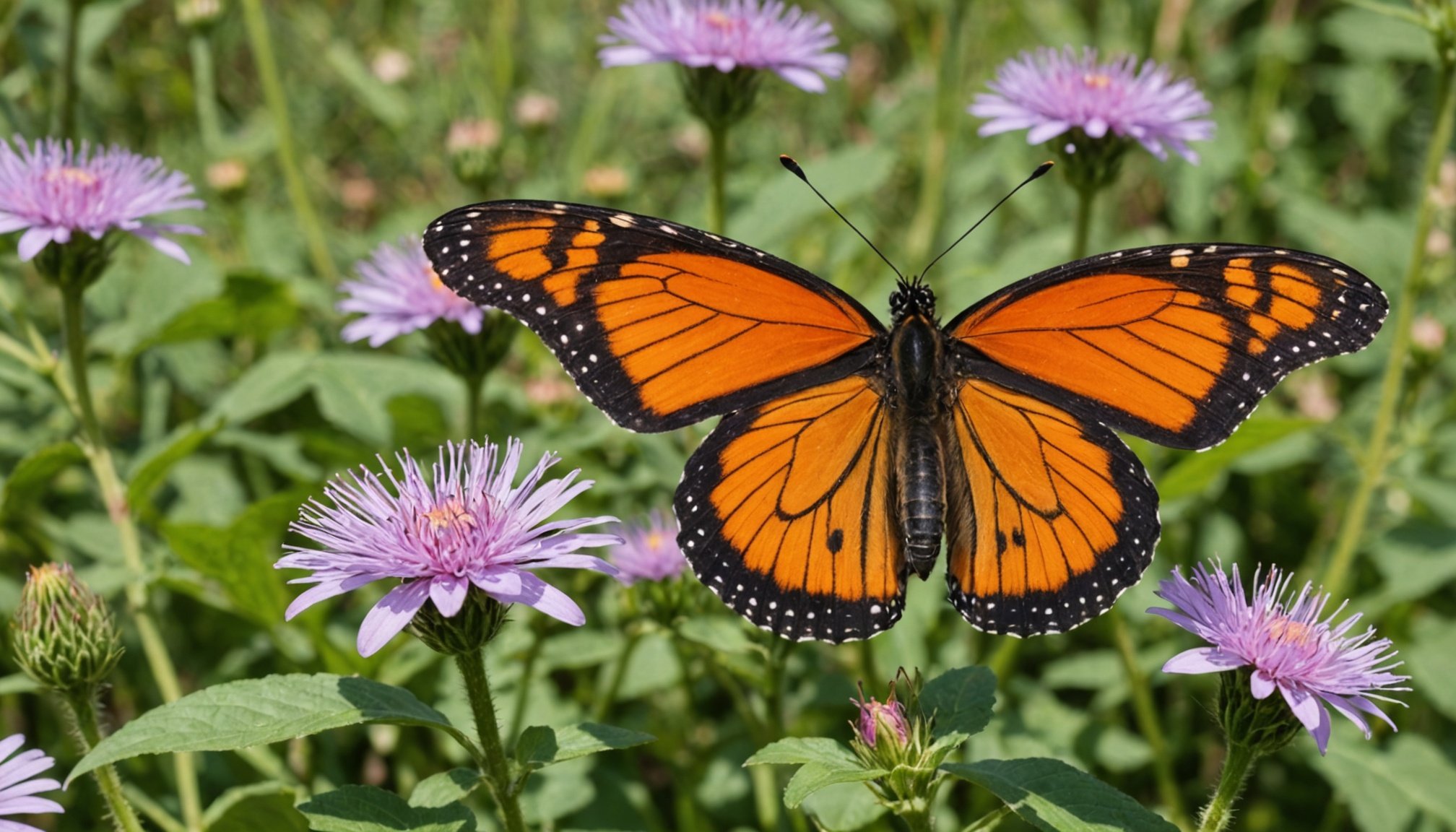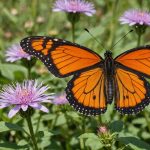Creating a butterfly garden is a simple yet impactful way to enhance biodiversity in the UK. With alarming rates of species decline, every effort counts. A butterfly garden provides essential habitats and food sources, allowing these delicate pollinators to thrive. Imagine attracting stunning butterflies while contributing to environmental health. This initiative not only enriches local ecosystems but also offers a rewarding and educational experience for all ages. Discover how you can start your own butterfly garden and make a meaningful difference today.
Importance of Butterfly Gardens in Enhancing UK Biodiversity
Creating butterfly gardens plays a pivotal role in enhancing biodiversity in the UK. These gardens serve as vital habitats for butterflies, which are crucial indicators of a healthy ecosystem. The presence of butterflies often signals a balanced environment, as they are sensitive to changes in climate and habitat quality.
A découvrir également : Uncovering and Alleviating Environmental Stressors in Cats to Prevent Psychosomatic Issues
Butterflies contribute to biodiversity enhancement by pollinating various plant species, which in turn supports other wildlife. A decline in butterfly populations can indicate broader ecological issues. Therefore, establishing butterfly gardens is essential not only for butterflies but also for the overall health of local ecosystems.
Role of Butterfly Gardens
- Habitat Creation: Butterfly gardens provide a sanctuary for butterflies to thrive, offering them food, shelter, and breeding grounds.
- Pollination Support: By attracting butterflies, these gardens aid in the pollination of native plants, contributing to a richer biodiversity.
- Educational Opportunities: They serve as an educational tool, raising awareness about the importance of preserving biodiversity.
Ecological importance cannot be overstated. Butterfly gardens help maintain ecological balance, support local wildlife, and foster a greater understanding of environmental conservation. By investing in these gardens, communities contribute to the preservation and enhancement of their natural surroundings, ensuring a sustainable future for both butterflies and the broader ecosystem.
A lire en complément : Uncovering and Alleviating Environmental Stressors in Cats to Prevent Psychosomatic Issues
Practical Steps for Creating a Butterfly Garden
Creating a haven for butterflies requires thoughtful planning and design.
Assessing Outdoor Space
To begin creating butterfly gardens, evaluate your outdoor area to ensure it has the potential to support a thriving habitat. Consider the size and existing plant life. A diverse range of native plants will attract a wider variety of butterfly species. Ensure there is enough space for both nectaring and host plants, essential for feeding and breeding.
Selecting the Right Location
Choosing the correct location is crucial. Sun exposure plays a significant role in butterfly gardens, as butterflies are cold-blooded and need warmth to become active. Select an area that receives at least six hours of sunlight daily. This will help in maximizing butterfly attraction.
Designing the Layout
Designing a garden layout that appeals to butterflies involves strategic placement of plants. Group similar plants together to create a habitat that is easily accessible. Incorporate a mix of flowering plants to provide continuous blooms from spring to fall.
- Nectar Plants: Buddleia, Lavender, Echinacea
- Host Plants: Milkweed, Nettles, Violets
Creating butterfly gardens not only enhances biodiversity but also offers a beautiful and educational space. By focusing on these practical steps, you can ensure a successful and vibrant butterfly habitat.
Choosing Native Plants for Your Butterfly Garden
Selecting the right plants is crucial for creating a thriving butterfly habitat.
Importance of Using Native Species
Choosing native plants is essential for supporting local butterfly populations. Native species are adapted to the local climate and soil conditions, making them more resilient and easier to maintain. They provide the specific nutrients that local butterflies require, ensuring a sustainable environment for both butterflies and the plants themselves.
Recommended Native Plants
To attract specific butterfly species, consider incorporating a variety of butterfly-friendly plants. Here is a selection of native plants that can enhance your garden's appeal:
- Common Blue: Prefers Bird's-foot Trefoil
- Painted Lady: Attracted to Thistles
- Red Admiral: Enjoys Stinging Nettles
Planting Techniques
Employing effective planting techniques is vital for promoting healthy growth and sustainability. Grouping similar plants together can create a microhabitat that supports butterfly activity. Ensure that plants are spaced adequately to allow for air circulation and sunlight penetration.
Plant selection should focus on providing continuous blooms throughout the growing season. By doing so, you cater to the needs of butterflies at different life stages, from caterpillar to adult, fostering a robust and vibrant butterfly garden.
Supporting Butterfly Populations Through Maintenance
Caring for your garden ensures a thriving butterfly habitat.
Best Practices for Garden Maintenance
Maintaining a butterfly garden requires consistent attention to detail. Garden maintenance involves regular watering, pruning, and monitoring plant health. Use organic fertilizers to enrich the soil, promoting robust plant growth without harming butterflies. Avoid overcrowding plants to ensure adequate airflow and sunlight penetration.
Importance of Avoiding Pesticides
To effectively support butterfly populations, it is crucial to avoid using pesticides and chemical treatments. These substances can be harmful to butterflies and other beneficial insects. Instead, opt for natural pest control methods, such as introducing ladybugs or using neem oil. This approach fosters a safer environment for butterflies to thrive.
Seasonal Care Tips
Adapting your garden care routine to the changing seasons is essential for sustaining butterfly habitats. In spring, focus on planting nectar-rich flowers to attract early arrivals. Summer requires diligent watering and deadheading to encourage continuous blooms. During autumn, leave some fallen leaves as they provide shelter for overwintering species.
Conservation techniques are vital for ensuring the long-term health of butterfly gardens. By integrating these practices, you can create a flourishing environment that not only supports butterflies but also enhances the overall biodiversity of your garden.
- Watering: Regular, deep watering sessions
- Pruning: Trim dead or overgrown branches
- Pest Control: Use natural methods only
Ecological Benefits of Butterfly Gardens
Butterfly gardens are essential components of thriving ecosystems.
Role in Pollination and Food Chains
Butterflies play a significant role in pollination, acting as vital agents in the reproduction of flowering plants. By transferring pollen, they enhance plant diversity and support the biodiversity of their habitats. This process is crucial for the survival of many plant species, which in turn provide food and shelter for other wildlife. The interconnectedness of these relationships highlights the importance of butterfly gardens in maintaining healthy food chains.
Contribution to Ecosystem Health and Resilience
Butterfly gardens contribute to the overall ecosystem health by supporting a wide range of species. The presence of butterflies often indicates a balanced and resilient environment. These gardens help buffer against ecological disturbances, such as habitat loss and climate change, by providing stable habitats. Through their role in biodiversity support, butterfly gardens enhance the resilience of ecosystems, allowing them to recover more quickly from environmental stresses.
Connecting to Larger Conservation Efforts
Butterfly gardens are integral to larger conservation efforts aimed at preserving biodiversity. By creating these habitats, individuals and communities actively participate in conservation initiatives. This collective effort helps sustain butterfly populations, which are crucial for maintaining ecological balance. The establishment of butterfly gardens is a practical step towards achieving broader environmental conservation goals.
- Pollination: Essential for plant reproduction
- Biodiversity Support: Enhances species richness
- Conservation Efforts: Vital for ecological balance
Community Involvement and Educational Opportunities
Engage your community and inspire learning through butterfly gardening.
Encouraging Local Community Involvement
Community gardening projects offer a platform for fostering engagement and collaboration. By involving local residents in butterfly gardening initiatives, communities can create vibrant habitats that support biodiversity. These projects encourage shared responsibility and pride in local environments. Participants can contribute by planting, maintaining, and monitoring gardens, fostering a sense of accomplishment and stewardship.
Educational Programs and Workshops
Educational resources are crucial for raising awareness about the importance of butterfly gardens. Organizing workshops and programs for both children and adults can enhance understanding of ecological principles. These activities provide hands-on experiences, teaching participants how to select plants, design layouts, and maintain gardens. By integrating educational opportunities, communities can cultivate a deeper appreciation for biodiversity and conservation.
Success Stories from Community Projects
Success stories from community butterfly gardens highlight the positive impact of collective efforts. For instance, a local garden project in Bristol transformed an unused plot into a thriving butterfly habitat, attracting numerous species and engaging over 200 volunteers. Such examples demonstrate the potential of community involvement to create meaningful change.
- Community Gardening: Builds local engagement
- Educational Resources: Enhance ecological understanding
- Engagement Activities: Foster collaboration and pride
By embracing community involvement and educational opportunities, butterfly gardens become more than just ecological havens—they transform into centers of learning and community pride.
Resources and Further Reading on Biodiversity and Butterfly Gardens
Explore a wealth of knowledge to deepen your understanding of butterfly conservation and biodiversity initiatives.
Organizations Supporting Butterfly Conservation
Numerous organizations in the UK are dedicated to butterfly conservation and enhancing biodiversity. These groups provide valuable resources and support for those interested in establishing butterfly gardens.
- Butterfly Conservation: Focuses on protecting butterflies and moths.
- Wildlife Trusts: Offers guidance on creating wildlife-friendly spaces.
- Royal Horticultural Society: Provides planting tips to support pollinators.
Recommended Books and Online Resources
To further your knowledge, consider exploring these recommended books and online resources that delve into biodiversity initiatives and butterfly gardening.
- "The Butterfly Gardener's Guide": A comprehensive resource for garden planning.
- "Biodiversity for Beginners": An introduction to ecological principles.
- Online Courses: Platforms like Coursera offer courses on conservation.
Local Biodiversity Initiatives
Engage with local biodiversity initiatives to make a tangible impact. These initiatives often provide opportunities to participate in conservation efforts and learn from experts.
- Community Garden Projects: Collaborate with others to enhance local habitats.
- Volunteer Programs: Join efforts to monitor and maintain butterfly populations.
- Workshops: Attend events to gain practical skills in biodiversity conservation.
By tapping into these resources, you can play an active role in supporting butterfly conservation and promoting biodiversity.










